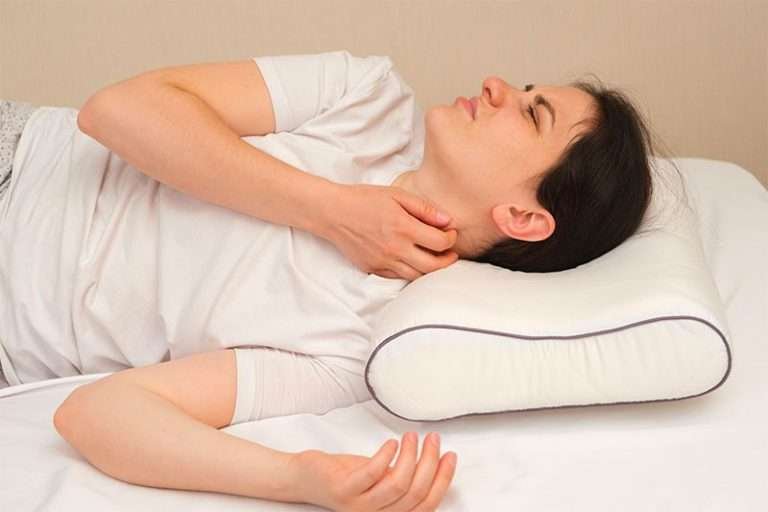Introduction
Lower back pain on the right side is a prevalent issue, impacting a significant portion of the population at some point in their lives. This pain is often linked to muscular strain in the lumbar region, the lower part of the spine. This extended article delves into the intricacies of muscular strain as a cause of right-sided lower back pain, offering comprehensive insights into its anatomy, causes, symptoms, diagnosis, treatment, and prevention.
Anatomy of the Lower Back
The lower back, or lumbar region, plays a pivotal role in the structural support, movement, and protection of certain body tissues. This section of the spine comprises:
- Muscles and Tendons: These elements are vital for supporting the spinal column and facilitating movement. The erector spinae, a muscle group in the lower back, is often involved in cases of muscular strain.
- Ligaments: These are tough, fibrous tissues that connect bones and stabilize joints.
- Vertebrae: The spine is composed of these bony segments, including the lumbar vertebrae which bear much of the body’s weight.
- Intervertebral Discs: Situated between the vertebrae, these discs function as shock absorbers and aid in movement.
Understanding the anatomy is crucial for identifying the root causes of lower back pain and implementing effective treatments.
Causes of Muscular Strain
Muscular strain in the lower back can be attributed to several factors:
- Improper Lifting Techniques: One of the most common causes of muscular strain is incorrect lifting, especially when handling heavy objects. This often involves twisting the spine or lifting with the back rather than the legs.
- Sudden or Awkward Movements: Quick, unexpected movements can overstretch or tear back muscles.
- Poor Posture: Chronic poor posture, especially during prolonged sitting, can lead to muscle fatigue and strain.
- Overuse and Repetitive Activities: Repetitive motions, like bending, lifting, or twisting, can strain the muscles over time.
- Physical Fitness: Individuals with lower levels of physical fitness may experience muscular strain more frequently, as their muscles might not be sufficiently conditioned to handle certain activities.
Each of these factors can contribute to the development of muscular strain, leading to lower back pain.
Symptoms of Muscular Strain
The symptoms of muscular strain are diverse and may vary in intensity:
- Pain and Stiffness: This is often localized in the lower back area and might worsen with movement.
- Muscle Spasms: Sudden, involuntary muscle contractions can be a reaction to strain.
- Decreased Range of Motion: Difficulty in bending or twisting can result from muscle strain.
- Pain that Radiates: Sometimes, the pain might radiate to other parts of the body, such as the buttocks or legs.
Recognizing these symptoms early is key to effective treatment and recovery.
Diagnosis
Diagnosing right-sided lower back pain typically involves:
- Physical Examination: A healthcare provider will assess the back for tenderness, swelling, and pain. They might also check for muscle strength and nerve function.
- Medical History: Discussing past injuries, activities, and health conditions can provide clues.
- Imaging Tests: In some cases, an X-ray, MRI, or CT scan might be necessary to rule out other causes of pain.
Treatment
The treatment of muscular strain in the lower back usually focuses on relieving pain and restoring normal function:
- Rest and Activity Modification: Initially, rest might be advised to alleviate pain. However, prolonged inactivity can lead to muscle weakness.
- Heat and Cold Therapy: Applying heat or cold can reduce muscle spasms and pain.
- Over-the-Counter Pain Medications: NSAIDs or acetaminophen can be effective in managing pain.
- Physical Therapy: A physical therapist can teach exercises to strengthen back muscles, improve posture, and increase flexibility.
- Alternative Therapies: Some people find relief through acupuncture, massage, or chiropractic treatments.
It is essential to follow a healthcare provider’s recommendations for treatment and recovery.
Prevention
Preventing muscular strain involves:
- Exercise Regularly: Strengthening the core and back muscles is vital.
- Proper Lifting Techniques: Always lift with the legs, not the back, and avoid twisting while lifting.
- Good Posture: Maintain proper posture, especially when sitting for long periods.
- Ergonomic Workspace: An ergonomic chair and desk setup can help.
- Regular Breaks: Taking breaks from prolonged sitting or standing can reduce strain.
Implementing these preventative measures can significantly reduce the risk of developing lower back pain.
Wrapping Up
Understanding muscular strain as a cause of right-sided lower back pain is crucial for effective management and prevention. By comprehending the anatomy of the lower back, recognizing the causes and symptoms, and following appropriate treatment and preventative measures, individuals can significantly improve their back health and quality of life.




